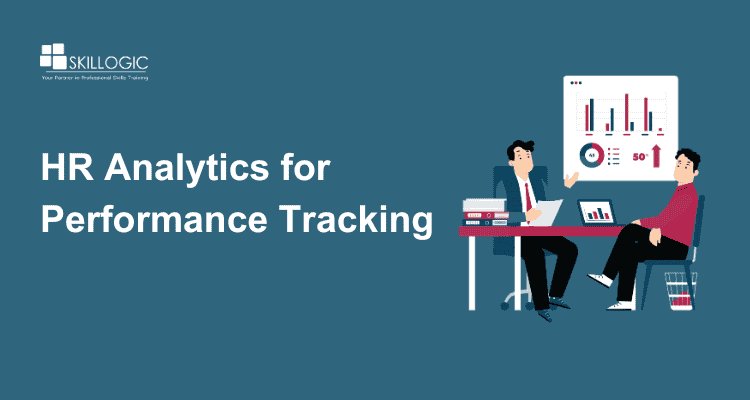HR Analytics for Performance Management: Tracking Growth & Development
Discover how HR analytics enhances performance management by tracking employee growth and development, improving productivity, and driving business success

HR analytics enhances performance management by leveraging data to optimize workforce decisions. It involves collecting and analyzing employee data to improve productivity. Organizations can track employee growth, identify trends, and make informed decisions for success. Tracking Growth & Development helps monitor progress, address skill gaps, and implement targeted programs to enhance overall workforce effectiveness.
Understanding the Role of Data in HR Analytics
HR analytics relies on data to help professionals make strategic workforce decisions. By leveraging data-driven decision-making, organizations can base their strategies on factual insights rather than assumptions. HR data is categorized into quantitative (e.g., attendance records, productivity scores, performance ratings) and qualitative (e.g., employee feedback, survey responses, manager assessments). Various sources, including employee surveys, performance reviews, training records, and attendance logs, contribute to HR analytics. However, maintaining data accuracy is essential, as unreliable data can lead to misleading conclusions, affecting employee development and overall business performance.
As organizations increasingly embrace HR analytics, the market in India is set for significant expansion. Grand View Research projects that by 2030, the market will reach $379.6 million, growing at a CAGR of 18.1% from 2023 to 2030. This surge reflects the rising demand for data-driven HR strategies that enhance workforce management and drive business performance.
Refer these articles:
- Optimizing Your Recruitment Funnel with HR Analytics
- HR Analytics vs. People Analytics: What’s the Difference?
- From Excel to AI: A Look at the Best HR Analytics Platforms
Key Metrics in HR Analytics for Performance Management
To effectively track employee growth and development, HR professionals focus on several key performance metrics:
- Employee Productivity Metrics: Evaluating output, efficiency, and goal achievement.
- Performance Ratings & Reviews: Assessing individual contributions through structured performance evaluations.
- Skill Development & Training Effectiveness: Measuring the impact of learning programs on employee growth.
- Employee Engagement & Satisfaction: Understanding workplace morale through surveys and feedback mechanisms.
- Retention & Turnover Rates: Analyzing workforce stability and identifying reasons for employee attrition.
By integrating HR analytics training into workforce strategies, HR professionals can develop a data-driven approach to managing these metrics effectively.
Tools & Technologies for HR Analytics
The implementation of HR analytics requires the right technological tools to collect, process, and analyze employee data. Some of the most commonly used tools include:
- HRIS (Human Resource Information Systems): Centralized platforms for managing employee information and tracking performance data.
- Performance Management Software: Tools designed to evaluate and enhance employee performance through continuous feedback and goal setting.
- AI & Machine Learning in HR Analytics: Advanced analytics tools that predict workforce trends and automate decision-making.
- Data Visualization & Dashboards: Graphical representations of HR data that help HR professionals identify trends and take action.
Many professionals seeking a business analytics course explore these tools to gain expertise in HR analytics, helping them build a career in workforce analytics and decision-making.
How to Implement HR Analytics for Performance Management
Organizations must follow a structured approach to implement HR analytics successfully:
- Define Clear Objectives: Align analytics initiatives with business and HR goals to ensure meaningful outcomes.
- Collect & Organize Data: Identify relevant data sources, integrate systems, and maintain data quality.
- Choose the Right Tools: Select software that fits organizational needs and enhances analytical capabilities.
- Analyze & Interpret Data: Use predictive analytics and dashboards to extract insights from workforce data.
- Develop Actionable Strategies: Convert data insights into strategies that improve employee performance and engagement.
- Monitor & Continuously Improve: Regularly update HR processes based on emerging trends and data findings.
HR professionals looking to upskill often pursue an HR analytics course to gain knowledge in these implementation steps and develop data-driven workforce strategies.
Refer these articles:
- How to become a Business Analyst in India
- Business Analytics Scope in India
- How to Become a Business Analytics Expert in India
Using HR Analytics to Track Growth & Development
HR analytics enables organizations to track and enhance employee development in various ways:
- Identifying High-Potential Employees: By analyzing performance trends, HR teams can recognize employees with leadership potential and invest in their growth.
- Personalized Learning & Development Plans: Tailoring training programs based on individual strengths and skill gaps enhances employee growth.
- Measuring the Impact of Training Programs: Assessing training effectiveness ensures that learning initiatives align with business objectives.
- Performance-Based Promotions & Career Progression: Using data to make promotion decisions ensures fairness and rewards employees based on merit.
Many professionals interested in HR analytics seek HR analytics training certification to deepen their understanding of how data can be used to drive employee development and business success. Additionally, enrolling in a business analyst course can help HR professionals expand their analytical skills and apply them in performance management strategies.
HR analytics enhances performance management by providing insights into employee growth and organizational efficiency. Leveraging data enables informed decisions that boost productivity, engagement, and retention. As demand for workforce analytics grows, HR professionals should invest in training. Future trends include AI-driven insights, predictive workforce planning, and Tracking Growth & Development, making HR analytics essential for modern HR management.
SKILLOGIC Institute offers a wide range of professional training programs to help individuals enhance their skills and advance their careers. With over a decade of experience, SKILLOGIC has built a strong reputation for excellence, specializing in certification courses in Six Sigma, PMP, Cybersecurity, and Business Analytics. As a SKILLOGIC business analytics institute, it is recognized for delivering high-quality education through experienced trainers with real-world expertise.
With offline centers in major cities like Bangalore, Chennai, Pune, and Hyderabad, SKILLOGIC ensures accessibility for learners across India. Whether you're looking to upskill in your current role or explore new career opportunities, SKILLOGIC provides the necessary resources and support to help you achieve your goals.

0
133